
Spittal an der Drau is a town in the western part of the Austrian federal state of Carinthia. It is the administrative centre of Spittal an der Drau District, Austria's second largest district (Bezirk) by area.

Dunkelsteinerwald is a market municipality with 2,289 inhabitants in the district Melk in Lower Austria, Austria.

Lienz is a medieval town in the Austrian state of Tyrol. It is the administrative centre of the Lienz district, which covers all of East Tyrol. The municipality also includes the cadastral subdivision of Patriasdorf.

Mittersill is a city in the federal state of Salzburg, Austria, in the Pinzgau region of the Alps. It is located on the Salzach River. It has a population of 5,408 as of 2011.
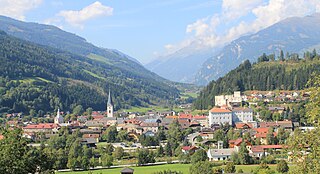
Gmünd in Kärnten is a municipality and historic town in the district of Spittal an der Drau, in the Austrian state of Carinthia.
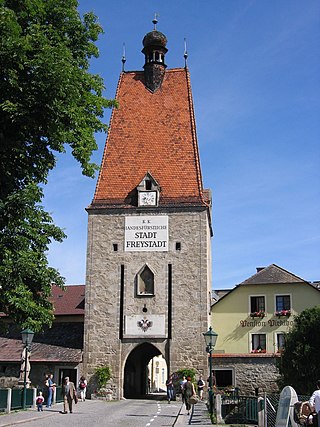
Freistadt is a small Austrian town in the state of Upper Austria in the region Mühlviertel. With a population of approximately 7,500 residents, it is a trade centre for local villages. Freistadt is the economic centre of a district of the same name District Freistadt. The nearest sizeable cities are Linz, the capital of Upper Austria, about 40 km in the south, and České Budějovice, the capital of Southern Bohemia, about 60 km in the north.

Feldbach is a town in the southeast of the Austrian state of Styria, near the Slovenian and Hungarian border. It is located in the valley around the river Raab. With 13,421 inhabitants, Feldbach is the fifth largest town in Styria.
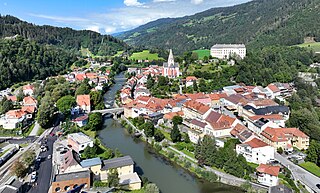
Murau is a town in the western part of the Austrian federal state of Styria. It is the administrative seat of Murau District.

Potzneusiedl is the smallest village in the district of Neusiedl am See in Burgenland in Austria.

Moosburg is a market town in the Klagenfurt-Land district in the Austrian state of Carinthia.

Oberdrauburg is a market town in the district of Spittal an der Drau at the western rim of the Austrian state of Carinthia.

Obervellach is a market town in the district of Spittal an der Drau, in the Austrian state of Carinthia.

Bad Sankt Leonhard im Lavanttal is a spa town in the district of Wolfsberg in the Austrian state of Carinthia.

Sillian is a market town in the district of Lienz, in the Austrian state of Tyrol.
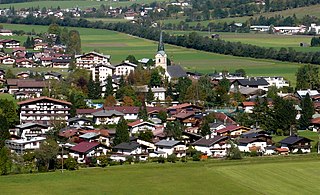
Kirchdorf in Tirol is a municipality in the Kitzbühel district in the Austrian state of Tyrol located 12.2 km (7.6 mi) north of Kitzbühel as well as 3 km (1.9 mi) north of Sankt Johann in Tirol at the Kitzbühler Ache. By area, Kirchdorf is the second largest municipality in the district. The village obtained its name from an old church which was built in the 8th century. The main sources of income are agriculture and tourism.
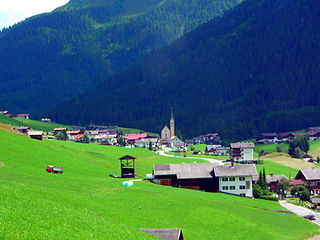
Kartitsch is a municipality in the district of Lienz in the Austrian state of Tyrol.

Obertilliach is a municipality in the district of Lienz, in the Austrian state of Tyrol.

Steinach am Brenner is a market town in the district of Innsbruck-Land in the Austrian state of Tyrol located south of Innsbruck in the Wipptal at the Sill River.

St. Ulrich is a Roman Catholic parish and church in Neubau, the 7th district of Vienna, Austria. The official name of the church is Pfarrkirche hl. Ulrich und Maria Trost, it is also known as Ulrichskirche. The Baroque hall church with two towers was built in 1721. It is consecrated to St. Ulrich and St. Mary.

Tragöß-Sankt Katharein is since 2015 a new municipality in Bruck-Mürzzuschlag District in Styria, Austria, which had merged after 31 December 2014 the independent municipalities Tragöß and St. Katharein an der Laming. This merger was part of the Styria municipal structural reform.


























